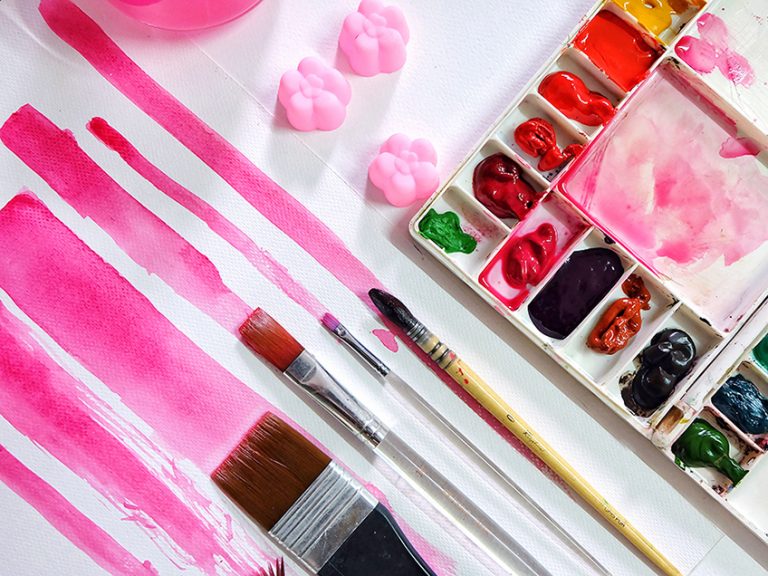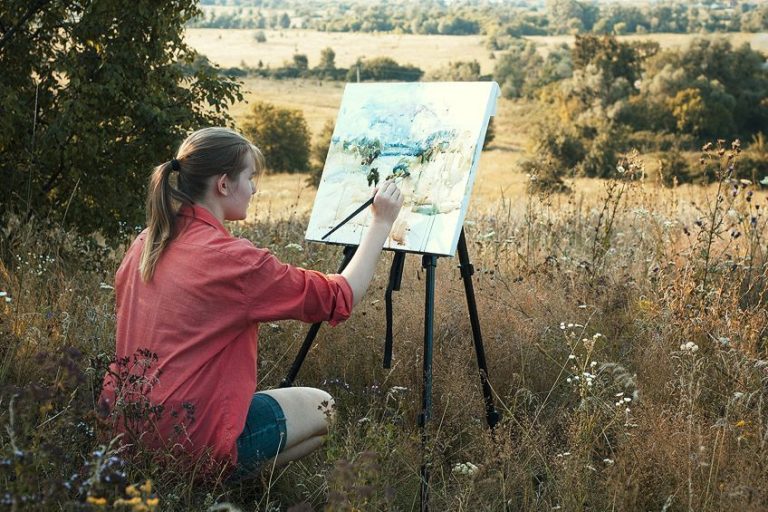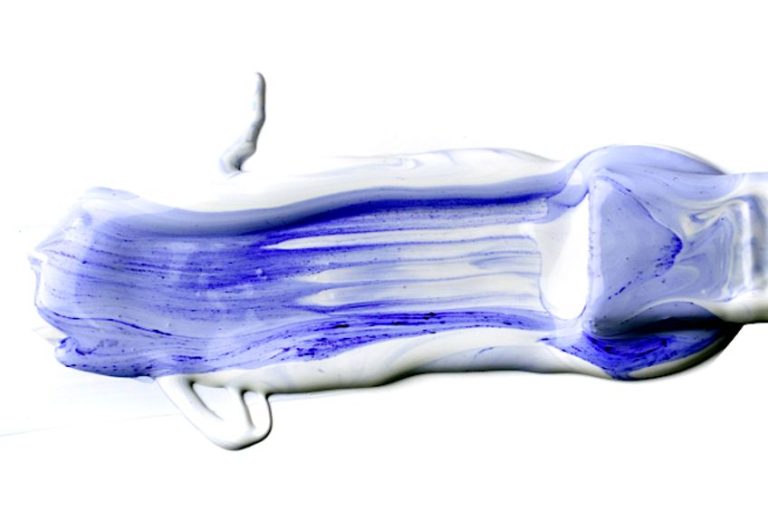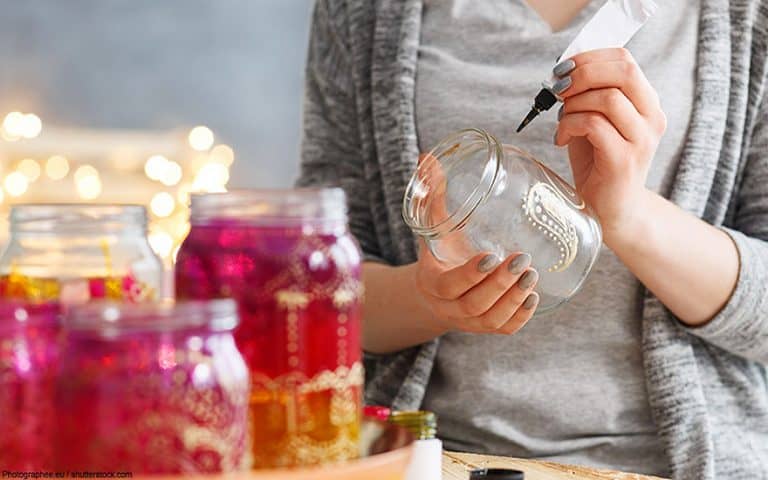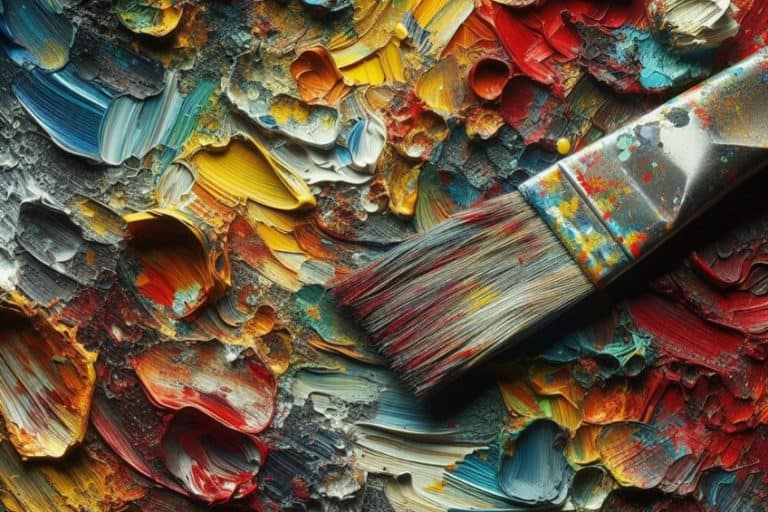Types of Drawing Paper – Complete Paper Guide with Tips
This post may contain affiliate links. We may earn a small commission from purchases made through them, at no additional cost to you.
There are many different types of paper available, some are for inks, and pens, while others are more for graphite pencils and paints. When it comes to pencil and paper drawing, colored pencils also perform differently on each type of paper. You need to discover the variety of paper for color pencils, and which one will be best for your project. Read on to find out more about the best paper for colored pencils, with a few tips and tricks along the way.
Table of Contents
What is Drawing Paper?
The paper for drawing should not be completely smooth and must have a bit of texture or “tooth”. The slight texture will help the pencil color to grip the paper surface more effectively. There are many formats paper or board products can come in, for example, individual or multi-sheet paper packs, sketchbooks, journals, pads, blocks, and even rolls or reams of paper.
Generally, medium-grain paper is good for pencil and paper drawing, but hot press watercolor paper is also popular and usually has a smoother surface. Some of the more popular brands for colored pencil paper include Stonehenge, Strathmore, Canson, amongst others. Colored pencils can also be applied to a variety of other surfaces such as wood, plexiglass, sandpaper, and mylar. Below are a few recommended options for colored pencil paper you might want to consider.
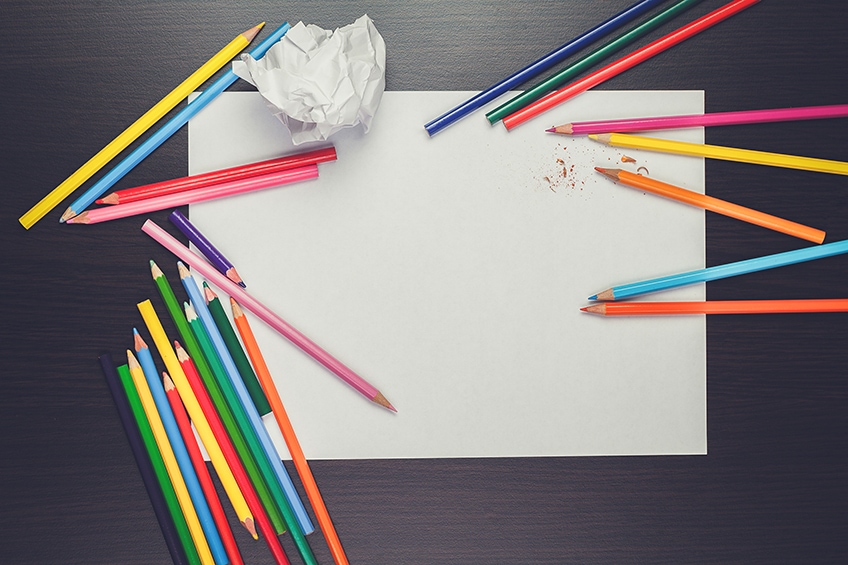
Stonehenge Paper
This paper is one hundred percent cotton and contains a nice even tooth. Even though it is made from cotton, it is an affordable option when compared to other choices like Bristol paper. You can purchase the paper in white, or you can also get paper that is lightly tinted. The paper comes in pads as well as large sheets for more substantial works of art. The paper can be used for other purposes including collage, fine art, printing, and painting.
Pastel Paper
The pastel paper has a nice texture that is perfect for pastels but can be used with other media like colored pencils. The paper comes in different colors, and you can purchase single sheets or pads. Some brands also offer pastel boards, but you can easily create wonderful pencil drawings on all versions.
Mixed Media Paper
This type of paper has some texture but not as much as your watercolor paper and provides smoother details when drawing on it. Even though the paper handles finer details, it can also manage watercolor washes. This type of paper is perfect for all kinds of mediums including colored pencils, graphite, ink, and pens. You can easily experiment with several different techniques.
Printing Paper
This paper is used in things like Lino prints, silkscreen printing, and etchings and is designed to absorb the ink from the printing plates. This makes the paper thicker than normal drawing paper, as well as softer and more absorbent. You can purchase this type of paper in different colors, including neutral tones and white. Since the surface is softer, it is advisable to work carefully with this type of paper to prevent damage.
Illustration Board
This paper for color pencil is an excellent choice, as it is a rigid board that is quite durable. The surface can withstand pressure and rubbing, and since it can resist tearing, it can be used for scratching out details from the pencil marks. There are many different brands available that have a variety of surfaces to choose from. However, the two main categories of paper are hot-press and cold-press. The hot press is ideal for colored pencil drawings that require more detailed work.
Suede Board
This is an expensive option and is perfect for creating a soft pastel look. You can easily apply multiple layers that you can blend using your finger. You can achieve a nice soft look, for example, animal fur. The board comes in different colors and has a mottled appearance, so you can use this as your background if you wish. Colors cannot be erased but can be gently lifted using some tape. Overall, this type of paper does require a little practice before getting all the drawing techniques right.
Matboard
These are boards that come in 32×40 sheets and usually come in picture frames between the photo and the frame. Matboard is made from a heavy paper base and can be cut to fit the frame. The rigid board provides a stable surface on which to work and can handle more layers of color than average drawing paper. The board also comes in a range of colors as well as different surface textures from smooth to rough. When purchasing a matboard, make sure it is archival as some boards do contain acids that can affect the surface, like discoloration.
Best Paper for Colored Pencils
I think we have now learned that using your average paper might not be the best option when working with colored pencils. Maybe for the kids to practice on it is okay, but you need something more specialized if you want to produce your best artwork and need it to last. Below are a few recommended options for the best paper for colored pencils.
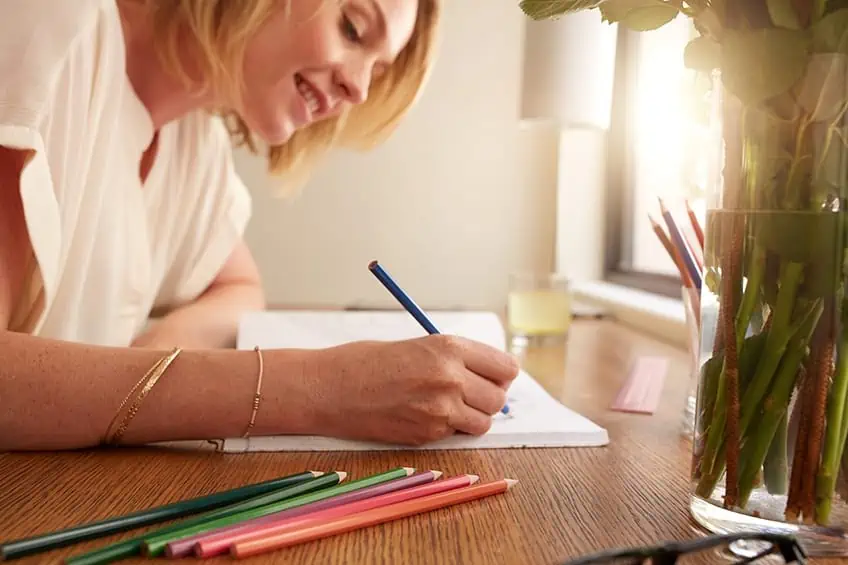
Features to Take Into Account When Looking for the Best Colored Pencil Paper
When looking to purchase colored pencil paper, there are some factors you need to think through. You do not want your drawing to discolor over time, so the paper needs to have archival properties. You should not be able to tear the paper too easily, and the paper must be able to handle multiple layers of color. There will be a price variation, but you are looking for something that offers good quality.
Paper Quality
As mentioned above, the quality of your paper does play a role in your final art drawing. You should look out for words like archival or permanent, which will make sure your artwork looks good for longer. Your paper should be acid-free, which is what can damage paper as well as cause discoloration.
Most paper contains cellulose fibers and wood pulp, which also contains lignin which is the main element of wood. The paper becomes more acidic over time due to this element, however, manufacturers have found a way to neutralize this effect. Some even take it further and add in what is known as alkaline buffers or remove the lignin completely. In that case, you can check the label which should say lignin-free.
Your best option for longevity would be to get one hundred percent cotton paper. This paper is also called rag paper and contains cotton fibers that are acid-free. Cotton paper can easily last for decades and is pliable and durable. Cotton is a good option, but it is expensive and if you are looking for something more reasonably priced, it might not be your first choice. Cotton also comes from different sources including hemp, bamboo, jute, and flax. There are, however, good-quality papers available that are not one hundred percent cotton. You just need to make sure you store the paper properly and keep it away from direct light.
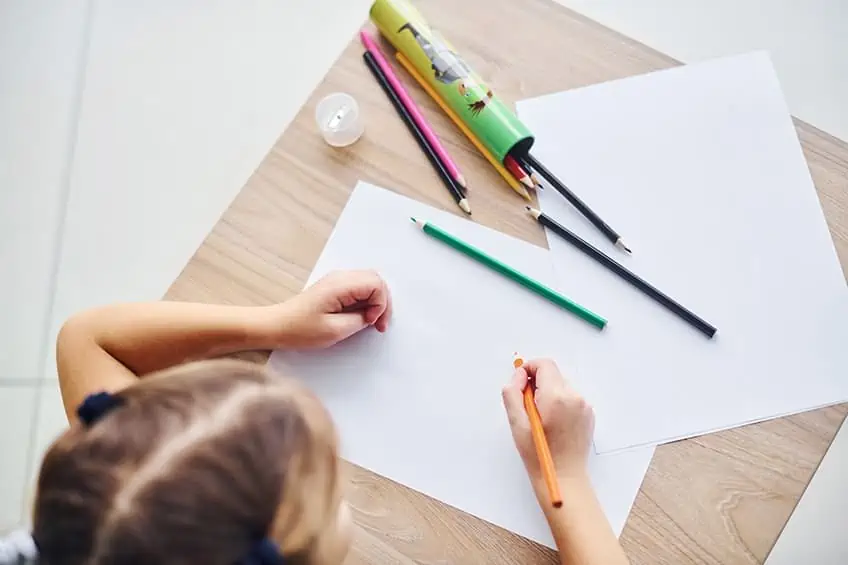
Pencil and Paper Drawing Textures
How a color pencil performs will depend on the paper texture. The paper texture is also known as the tooth or grain. You have many textures and patterns of fiber from smooth to medium and rough. Pencils will perform differently on all the surfaces but adhere quite well to most types of paper.
Rough paper has substantial tooth or texture and is the best for applications of layers. However, the rough surface does make it difficult to blend colors and can use up a pencil quite rapidly. Choosing rough paper will produce a broken or uneven look when using pencils and gives a unique appearance that you either like or not. This is the perfect paper for multimedia techniques.
Medium texture paper is also known as vellum, cold-pressed, or regular drawing paper. This is a popular choice as it falls nicely between the rough and smooth textures. You can easily layer and blend colors. This type of paper will also not use up a pencil as much as the rough paper. You will still have some grain showing through.
Smooth paper is also known as hot-pressed, fine, or plate grain. So, look out for sketch pads that mention being hot-pressed. This paper has very little texture and easily accepts finer details and blends the best out of all the texture options. Colors will also be more solid as there are no rough textures to break up the color, so you have a smooth distribution of colors. The downside is that smooth paper does not accept layering as well as other textures. Although, you can use a workable fixative to apply layers more effectively.
Some prefer cold-pressed or medium-grade paper for colored pencils, but many also enjoy using smoother paper. So, it ultimately depends on the artist and what they want to do. The best way to go is to try out various options to discover what works best. A smooth paper might be a good choice for beginners as layering is usually not a major consideration yet.
Paper Weight and Form
There are two main different ways that paper is measured, in pounds and grams. When it comes to measurements in pounds, this American method selects 500 sheets and calculates the weight in pounds. However, you get different sizes and types of paper, which means this method is not good when you have to compare the weight of different types of paper. The European method uses grams and weighs a single standard (one square meter) piece of paper. This provides a result that is calculated in grams per square meter. The size of the paper remains constant, so you do not have to worry about what type of paper it is.
You can use colored pencils on a variety of paper, however, if you are going to be using mixed media, blending using solvents, you must use a paper that is heavier so that it will not warp. The heavy paper is also better when using various techniques like erasing and burnishing. When using these techniques, you will need a paper that weighs 300 grams or more. The best paper would be mixed-media or watercolor paper. The heavy paper is expensive, so make sure it is what you need to complete your artwork. A more affordable option is Bristol paper, which is perfect if you do not apply any wet media.
Besides the weight, you also get paper in different forms, from single sheets, sketchbooks, pads, paper rolls to watercolor blocks and boards. To start, when working with colored pencils, consider getting single sheets. This is a more affordable way to experiment on different types of paper, without spending too much money. Although, you can save some money if you find a sketchpad that has a substantial number of sheets. There are paper products available that provide 50 sheets or more, and these can sometimes be used on both sides. You can also get paper pads that are tape-bound or sketchbooks that are wire-bound. Some paper products transport easier than others, for example, the wire-bound sketchbook could be easier to use while on the move.
When using wet media or other techniques, illustration boards or watercolor blocks are better options. You do not have to be concerned with the paper warping and it is easy to remove paper sheets once you are done.
Can You Erase Effectively?
We all make mistakes, and colored pencils are relatively easy to erase and rework. You do get papers that do not do so well, leaving smudges or even tearing the paper. Most ideal product descriptions for colored pencil paper include features that say that you can erase and that it is smudge-proof. The best quality papers should leave no trace behind once the pencil markings have been removed.
Choosing White or Toned Colored Pencil Paper
To produce artwork that is bright and bold, many artists like to choose white paper. The majority of good-quality paper comes in white sheets or pads. Make sure it is a decisive white color, as many will claim the paper is white but has a slightly off-white appearance. This will influence the outcome of your sketch.
On the other hand, the toned paper can provide a base from which to work that will produce more original effects. The colors can include anything from gray to pink, cream, blue, or any other color. Using toned paper can help to produce more realistic drawings. A toned paper might also help to hide mistakes more easily and you can finish a piece faster as you do not have to work to finish the background. You can also apply lighter and darker colors more efficiently or use the toned paper as one of your color values.
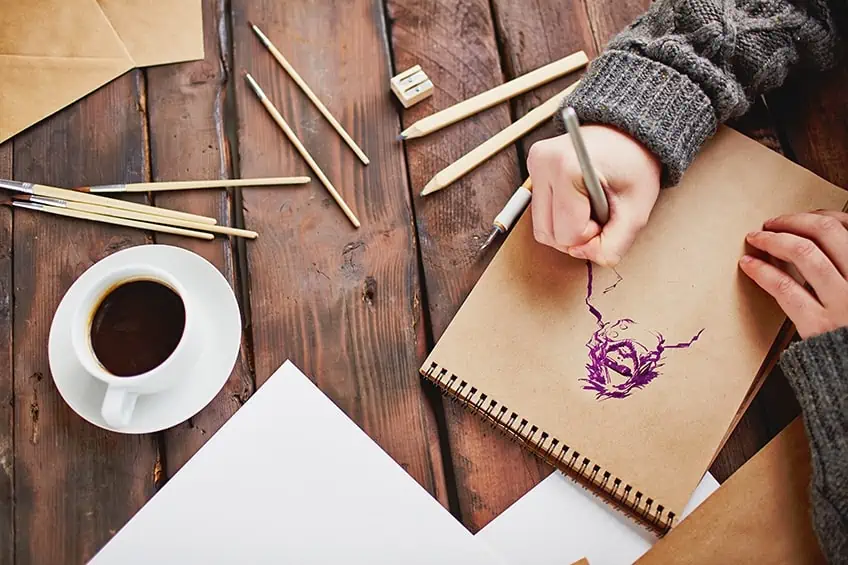
Are you Working on a Budget?
Thankfully, there is a range of brands as well as costs when it comes to paper for color pencils. You can purchase a few sheets of paper and try them out before buying an entire pad. Some of the higher-quality papers are more expensive, but you should be able to find an affordable alternative that offers similar qualities. You should also take into account the color pencils you are using, as some work better on certain paper than others. So, you might have to test a few out to see what paper will work best.
Colored Pencil Paper Comparison Table
We have created a comparison chart displaying the best paper for colored pencils with some of the paper properties for each type. Many of the products and paper brands have a variety of pads, sheets, size, and texture options available.
| Types of Paper | Quality/Archival | Texture | Form |
| Hot Pressed Watercolor Paper | Artist-grade is archival | Fine-grain and smooth surface | Pads, sheets, sketchbooks, and blocks of various sizes |
| Stonehenge Paper | Archival properties | Smooth, lightly textured surface | Various size sheet packs or pads |
| Pastel Paper | Most are acid-free and lightfast | Wide range of colors with a variety of line and grid textures | Paper pads of different sizes |
| Mixed Media Paper | All are 100% cotton. The paper is also acid-free. | Rough surface | Comes in sheets and paper pads of different sizes |
| Printing Paper | 100% cotton paper is the best choice | Smooth to heavily textured | Variety of sizes |
| Illustration Board | Some are not archival, always check boards made from 100% rag/cotton | Hard, flat surface | From small (10 to 15 inches) to large (30 to 40 inches) rigid board |
| Suede Board | Depends on the manufacturer if the board is archival or not, for example, Crescent Select is archival | Soft, fabric texture | Different size boards |
| Matboard | Acid neutralized: regular, rag and museum rag matboard | Comes in a variety of colors and textures | Different size boards |
Tips and Tricks When Using Paper for Drawing
Starting with colored pencils is not all that complicated as you only need some good quality paper and your colored pencils. Many artists create extremely detailed and amazing pieces of art simply by using colored pencils. Getting good at drawing is learning all the techniques, but just as important is practicing and experimenting. Here are a few easy tips when doing pencil and paper drawing.
How to Work on Colored Pencil Paper?
You can use colored pencils on most paper and other surfaces, but many prefer to use paper that has a little texture or tooth. This means the paper has small rises and dips, which form the paper grain. Colored pencils work best on paper that has a slight tooth and you will have to learn how to get the best drawing out of this type of paper.
First, you will need to hold the pencil correctly, instead of holding the pencil too much on its side, try holding it more upright as if you are writing. Doing this ensures the pencils provide maximum coverage. Preferably, use more circular strokes, because you go back and forth, you are constantly going against the grain and creating uneven color. Circular movement should create a smoother application and better-blended colors that have no streak marks. This movement is best for coverage unless you wish to apply a specific drawing technique like cross-hatching.
Applying heavier pressure will help to increase coverage. However, applying heavy pressure on the textured paper will use up your pencil quickly. So, begin by using lighter strokes and layer colors instead. The layered colors will also blend more easily and effectively. Not only will an increase in pressure use up the pencil, but it can also damage the paper surface unless you wish to apply a burnishing effect.
Good-Quality Pencils
Not only should you get good-quality paper, but good-quality pencils are also important. The Prismacolor wax-based pencils are a popular choice. These pencils are different from the ones sold as office or school supplies and will cost more too. The wax-based pencils are soft and blend well, however, they can also break easily. These types of pencils can be bought individually, so you can test out a few to find which one works best for you. You can then go for a larger set with different colors.
Paint and pencils are similar in that they might not appear the same on paper, so you should consider creating a color swatch for more accurate color identification. Keeping your pencils sharp is also important, as a sharp pencil provides more control. You can sharpen the pencil mechanically, or some prefer using a blade. Wipe the pencil through a soft brush to remove any excess wax, so it does not fall onto the drawing surface.
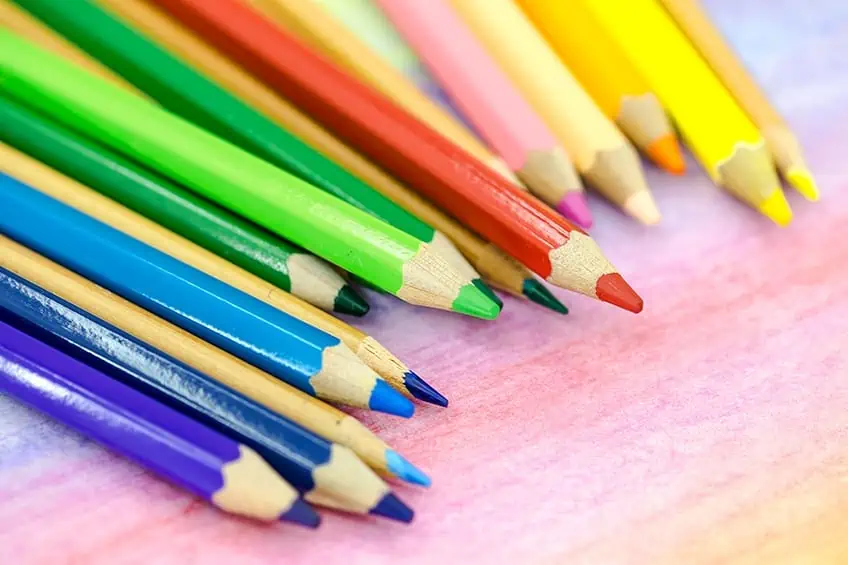
A Few More Tips
Made a mistake? Consider using some sticky tack to lift the pencil color from the page. Above, we mentioned removing excess pencil wax with a brush. However, if you do get some on your drawing surface, do not wipe it off. This could create unwanted streaks, rather try to blow it off or use a popular product known as a compressed gas duster.
A solvent is most commonly used to blend pencil colors, but if you have run out, try some rubbing alcohol. This might not be as effective, but it will do the job. Sometimes, you need to get to an area on the paper and you have to place your hand over an already colored piece. This can cause smearing, consider using some laminated paper over the area to avoid this.
Lastly, if you have a pencil that is difficult to sharpen, try using some coarse sandpaper. This will help to sharpen the pencil without running the risk of breaking the point. When using a sharpener, make sure to clean it properly as residue can stick behind and cause problems.
Conclusion
As you can see, there is a lot more that goes into using the correct paper for colored pencils. Bottom line, if you want to create artwork that is archival and of good quality, then purchasing the best paper for colored pencils is the way to go. Ultimately, even though you need good-quality tools and supplies for your work, nothing takes the place of practice and learning new things. Also, do not forget to have fun along the way.
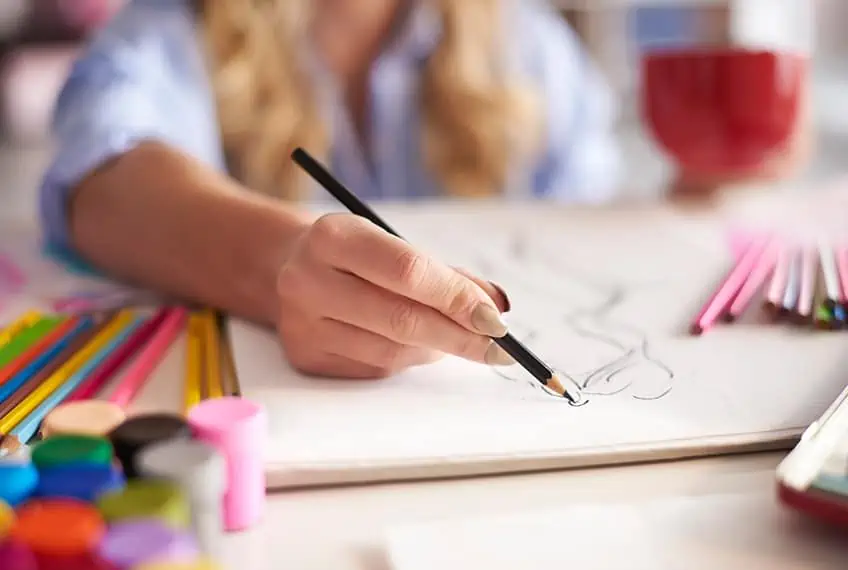
Frequently Asked Questions
What Is the Best Paper for Prismacolor Pencils?
Prismacolor pencils are good-quality wax pencils, so you will need good-quality paper that is durable. The pencils can cost a fair amount, so wasting them on normal paper is not ideal. Rather select an artist-grade paper that is made for dry media, for example, the Strathmore range of papers.
Must You Use Colored Pencils on Special Paper?
You can draw on ordinary paper, but the results will not be the best. Also, you will not be able to blend or use other techniques. If you are creating an art piece you would like to keep, the paper needs to be archival that will not warp. You might want to apply different techniques, for example, using watercolors, inks, pastels, or pens along with pencils. In this instance, heavyweight rough paper is needed. However, the smooth paper offers more control over your application, and you can achieve more detailed drawings.
Do Colored Pencils Work on Watercolor Paper?
Yes, colored pencils can be used on many surfaces like watercolor paper, wood, drawing paper, illustration boards, and lots more. Watercolor paper has more texture, so will produce slightly different results than when using paper that has a smoother surface.
Can You Draw on Printer Paper With Color Pencils?
Yes, the best choice for this is a lightweight cardstock, however, some printers may not be able to manage it. In this case, you can choose a heavier-weight cardstock as long as it is not glossy paper. The heavier paper will also be needed if you want to use various techniques like blending.
In 2005, Charlene completed her wellness degrees in therapeutic aromatherapy and reflexology at the International School of Reflexology and Meridian Therapy. She worked for a company offering corporate wellness programs for several years before opening her own therapy practice. In 2015, she was asked by a digital marketer friend to join her company as a content creator, and it was here that she discovered her enthusiasm for writing. Since entering the world of content creation, she has gained a lot of experience over the years writing about various topics such as beauty, health, wellness, travel, crafting, and much more. Due to various circumstances, she had to give up her therapy practice and now works as a freelance writer. Since she is a very creative person and as a balance to writing likes to be active in various areas of art and crafts, the activity at acrylgiessen.com is perfect for her to contribute their knowledge and experience in various creative topics.
Learn more about Charlene Lewis and about us.

